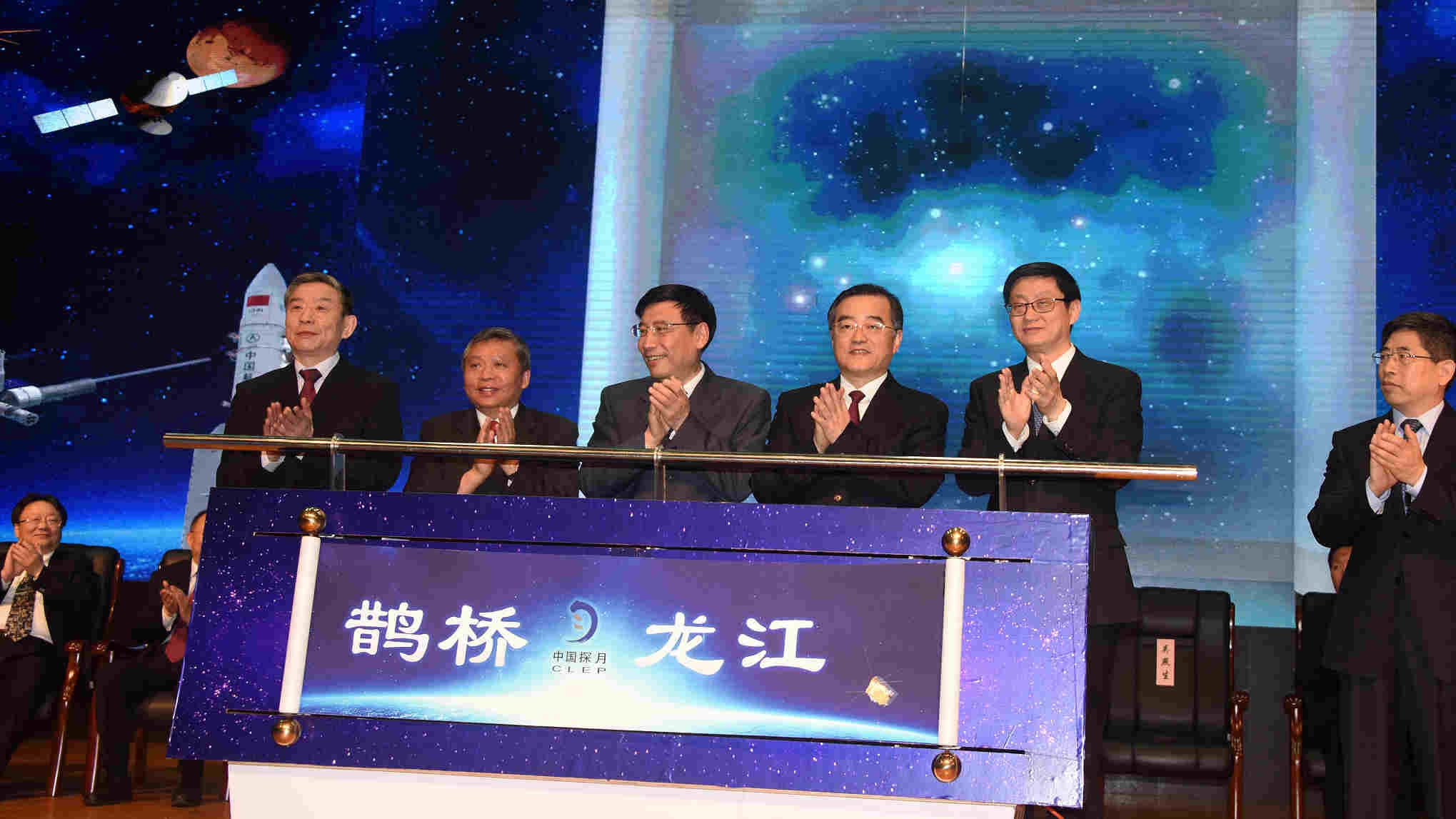
Space
15:09, 25-Apr-2018
China's Chang'e-4 relay satellite, a magpie bridge between the Earth and Moon
CGTN

The relay satellite for the Chang'e-4 lunar probe named "Queqiao" is expected to land on the far side of the Moon in May, announced by the China National Space Administration (CNSA) on Tuesday, China's Space Day.
The name “Queqiao” – translates to magpie bridge – is derived from a Chinese folktale, according to which the Milky Way separated Zhi Nv, the seventh daughter of the Goddess of Heaven from meeting her beloved husband, Niu Lang. They were allowed to meet once a year on the seventh night of the seventh month of the lunar calendar. So the magpies on that day grouped to make a bridge with their wings and helped the couple cross over and reach each other.

Niu Lang and Zhi Nv meeting each other on the magpie bridge. /VCG Photo
Niu Lang and Zhi Nv meeting each other on the magpie bridge. /VCG Photo
Together with the relay satellite, two microsatellites developed by the Harbin Institute of Technology, namely "Longjiang-1" and "Longjiang-2", will also be sent into orbit.
The works of Chang'e-4 is progressing well, said Li Guoping, a spokesman for CNSA. And the probe is planned to be sent in the latter half of 2018.
Chang'e-4 will carry payloads for Germany, the Netherlands, Saudi Arabia and Sweden.
The relay satellite will play a vital role as humans on Earth cannot directly set direct communication with the far side of the Moon, which requires signals transmitted by the relay satellite.
China plans to launch 36 satellite this year. The relay satellite will be sent into the halo orbit of the Earth-Moon Lagrange Point L2 in late May, and the Chang'e-4 lunar lander and rover will be sent to the Aitken Basin of the south pole region of the Moon about six months later.
"We designed an orbit at the Earth-Moon Lagrange Point L2 about 450,000 kilometers from the Earth, where a gravitational equilibrium can be maintained, and the relay satellite will be able to 'see' both the Earth and the far side of the Moon," said Bao Weimin, director of the Science and Technology Commission of the China Aerospace Science and Technology Corporation.
The Aitken Basin is an ancient lunar region containing lots of primeval information, and as the far side of the Moon is shielded from electromagnetic interference from the Earth, it is an ideal place to study the space environment. The probe can "listen" to the deeper reaches of the cosmos, said Bao.
Source(s): Xinhua News Agency

SITEMAP
Copyright © 2018 CGTN. Beijing ICP prepared NO.16065310-3
Copyright © 2018 CGTN. Beijing ICP prepared NO.16065310-3